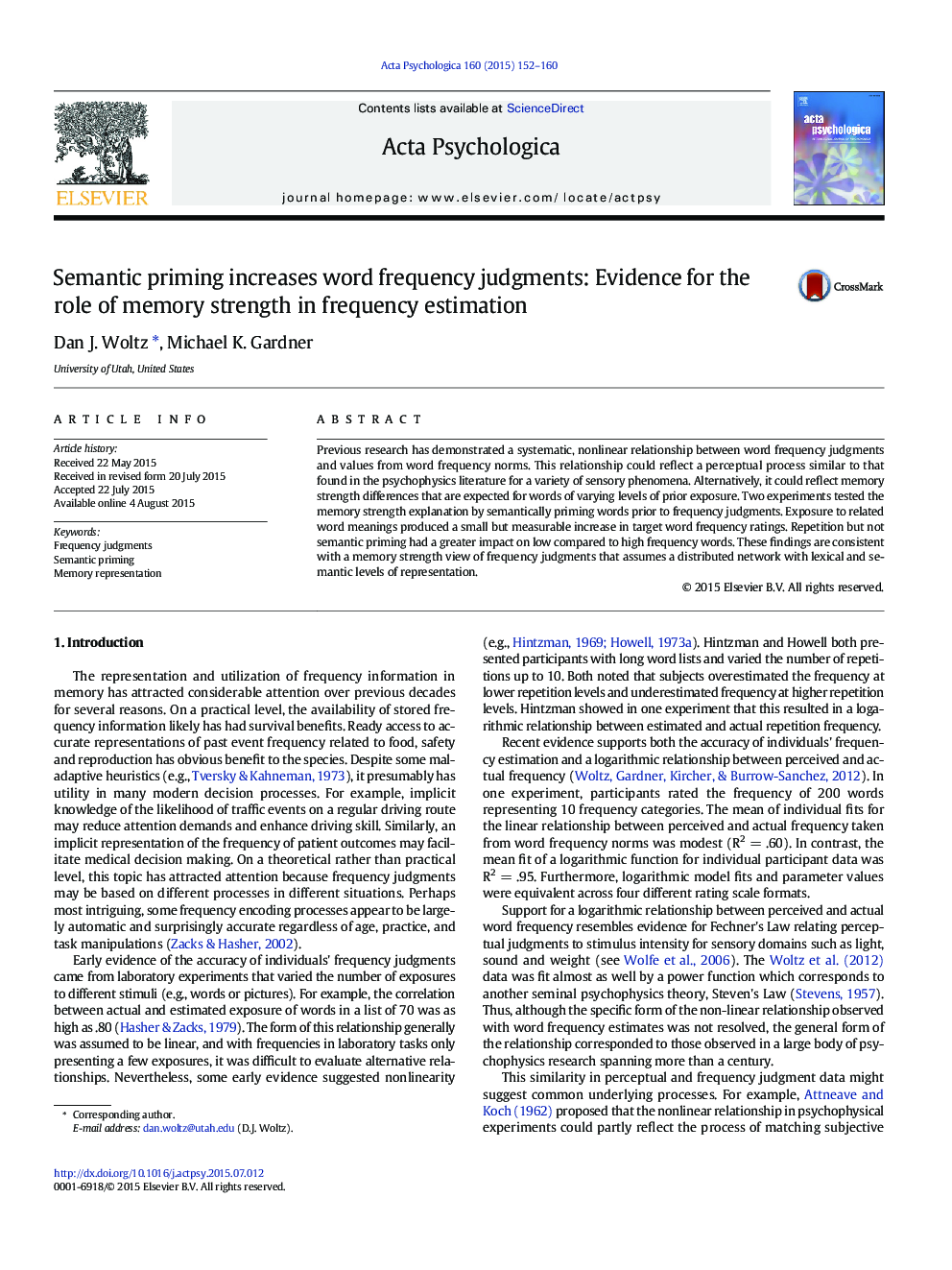| Article ID | Journal | Published Year | Pages | File Type |
|---|---|---|---|---|
| 919690 | Acta Psychologica | 2015 | 9 Pages |
•We contrasted direct coding and memory strength accounts of word frequency judgments.•Semantic priming was used to increase memory strength without increasing exposure.•Priming produced a significant increase in rated frequency in two experiments.•Results favored a strength over a direct coding model of frequency representation.
Previous research has demonstrated a systematic, nonlinear relationship between word frequency judgments and values from word frequency norms. This relationship could reflect a perceptual process similar to that found in the psychophysics literature for a variety of sensory phenomena. Alternatively, it could reflect memory strength differences that are expected for words of varying levels of prior exposure. Two experiments tested the memory strength explanation by semantically priming words prior to frequency judgments. Exposure to related word meanings produced a small but measurable increase in target word frequency ratings. Repetition but not semantic priming had a greater impact on low compared to high frequency words. These findings are consistent with a memory strength view of frequency judgments that assumes a distributed network with lexical and semantic levels of representation.
